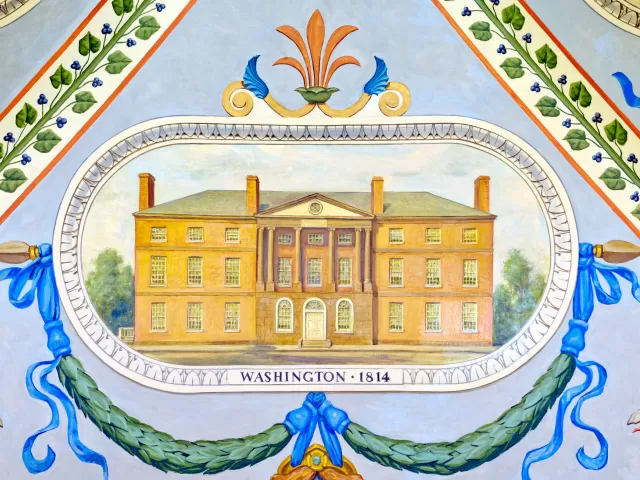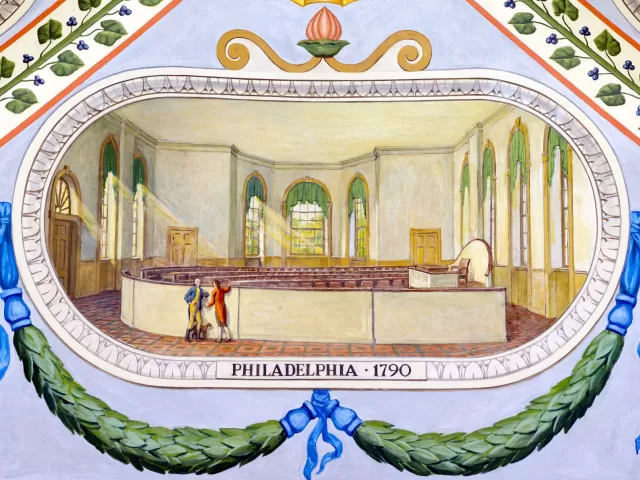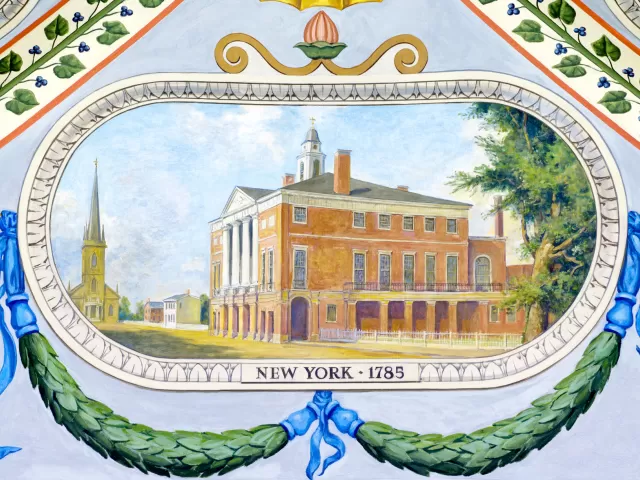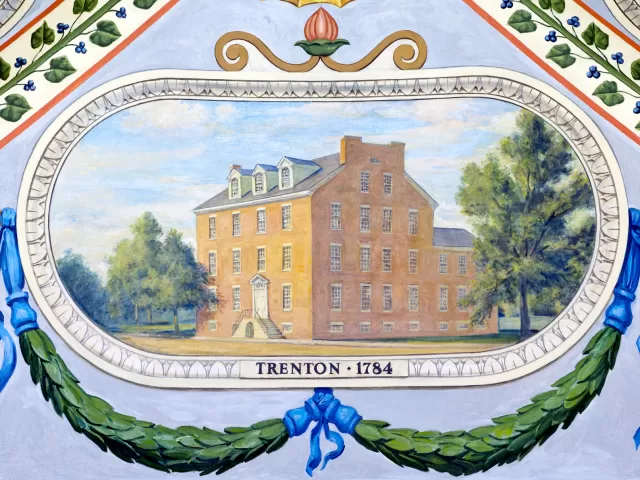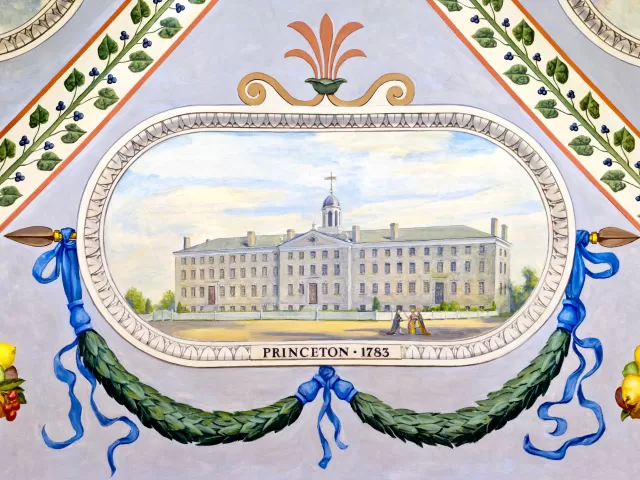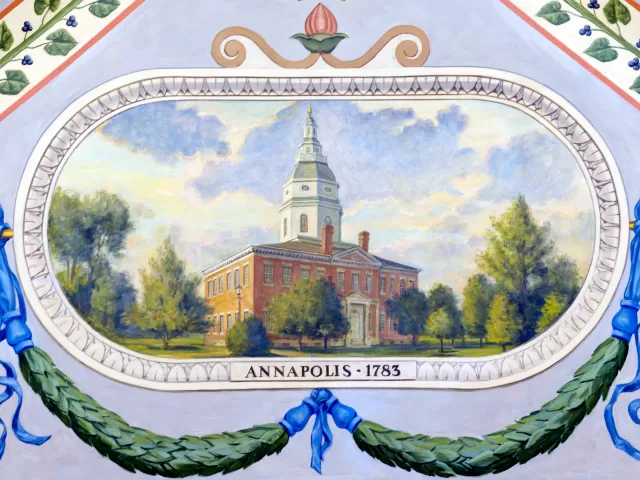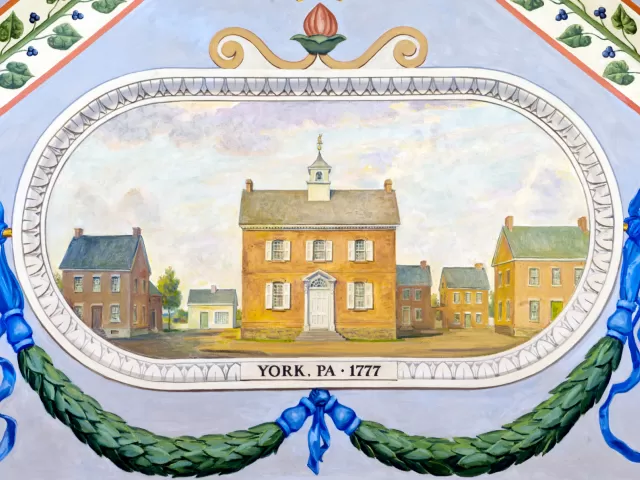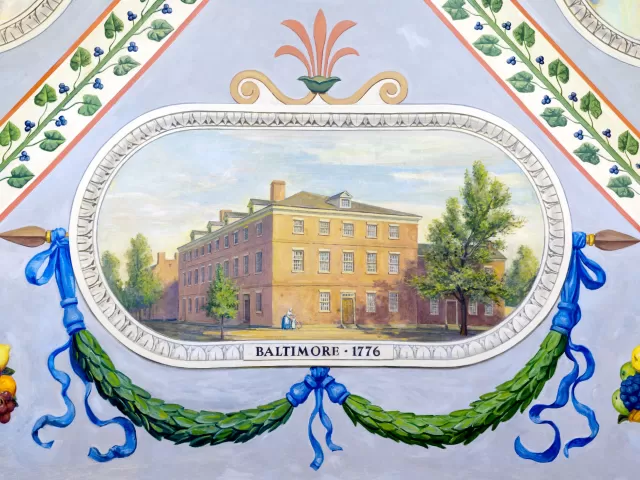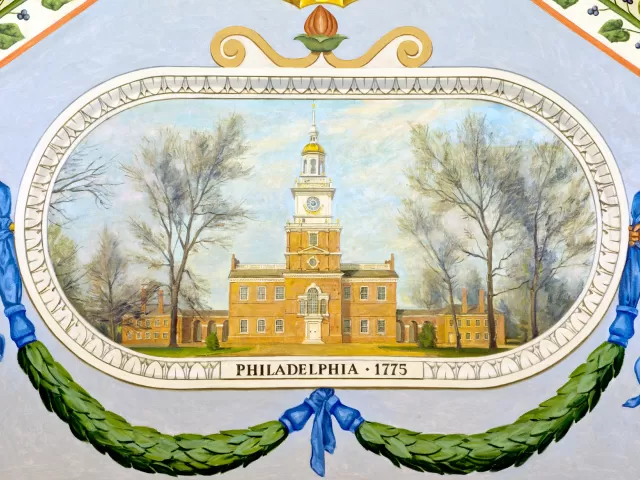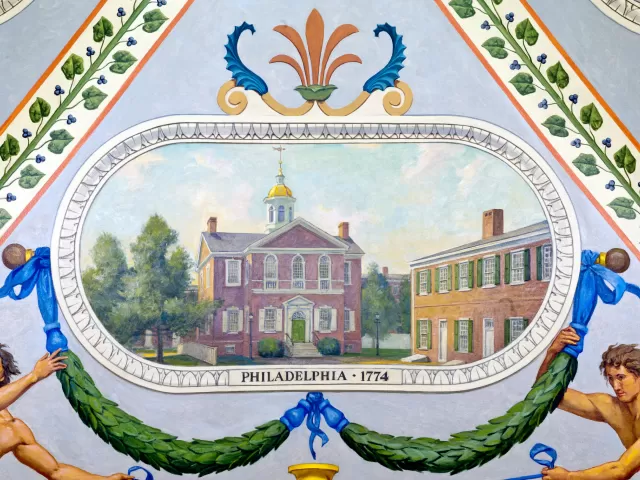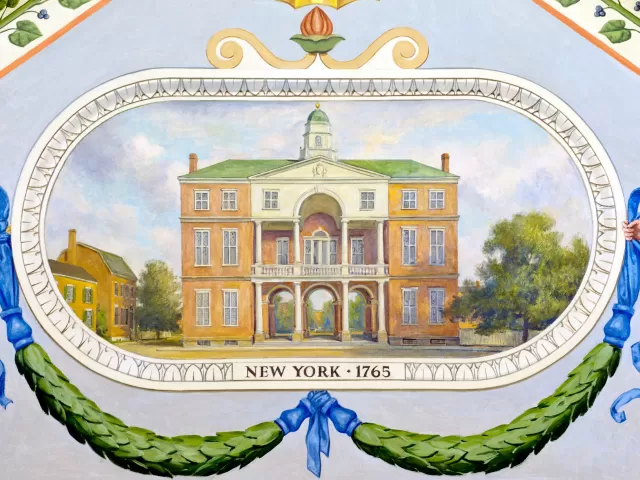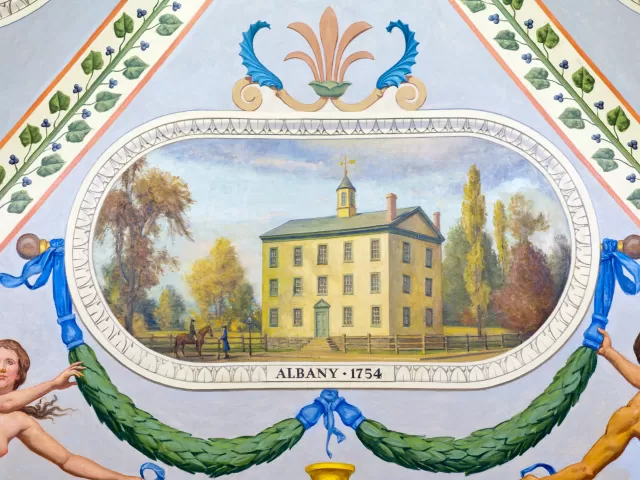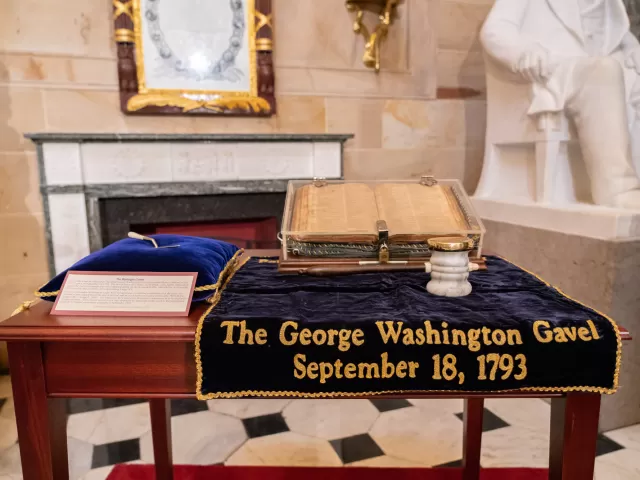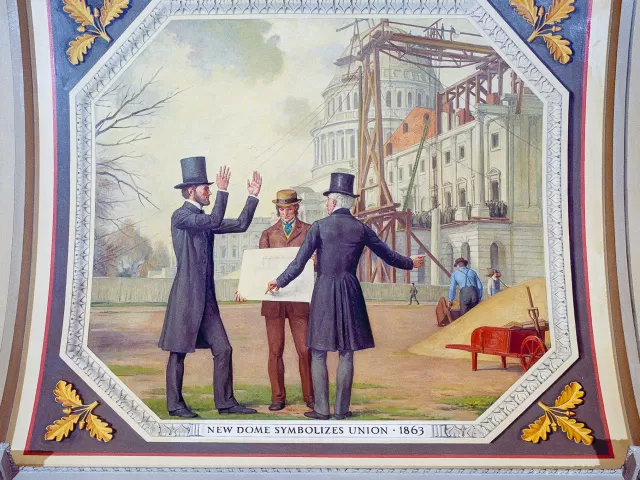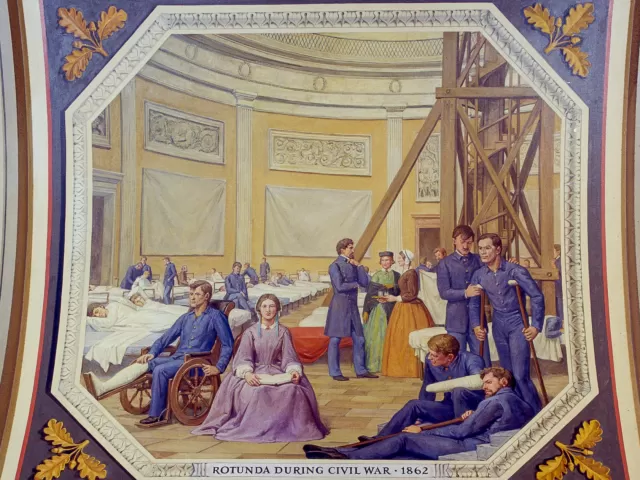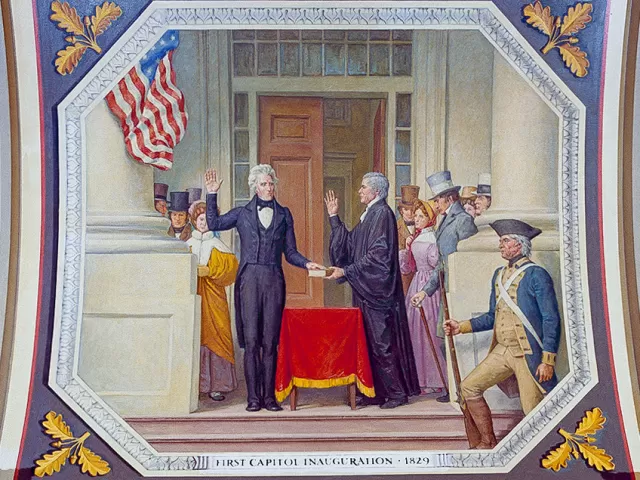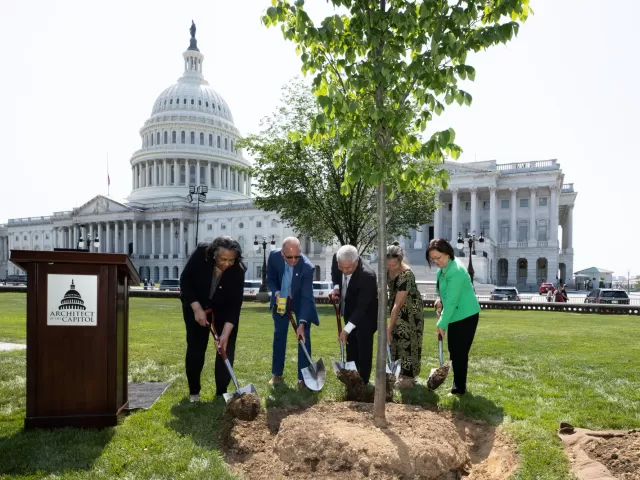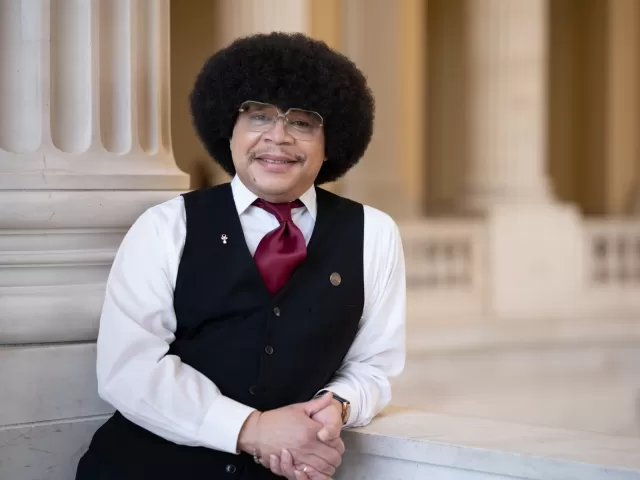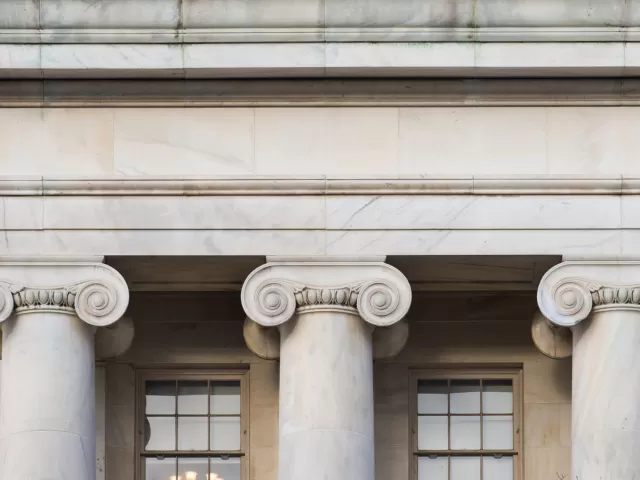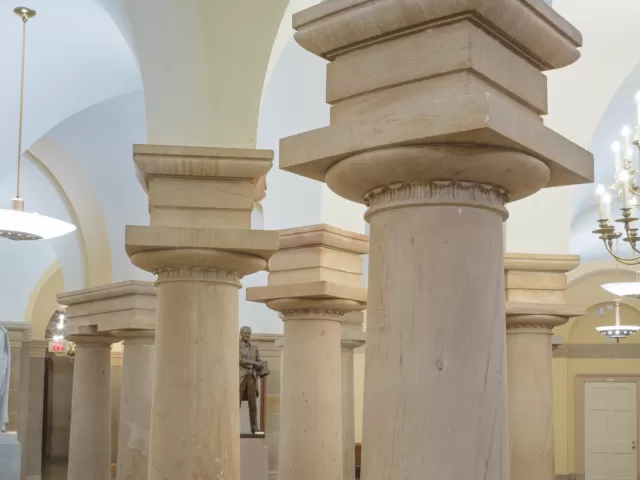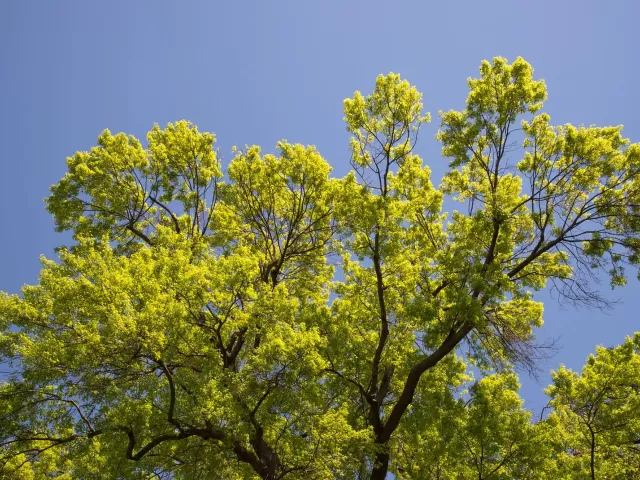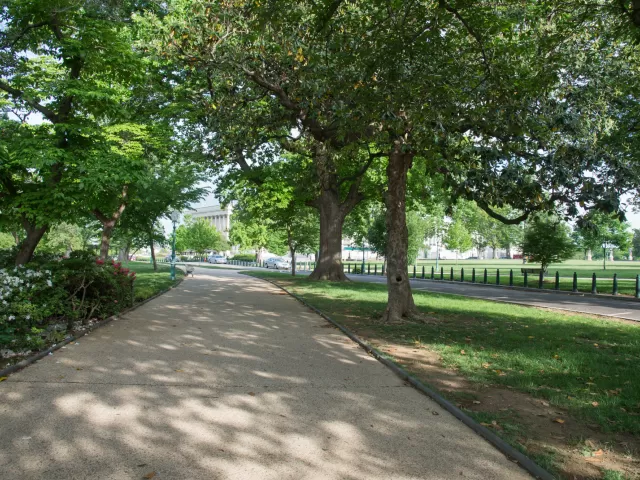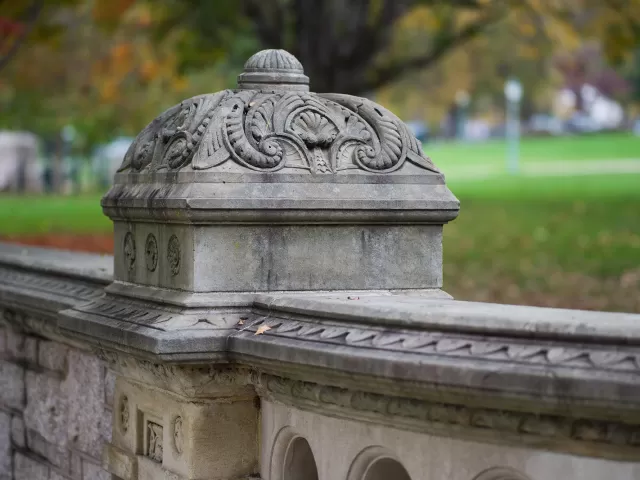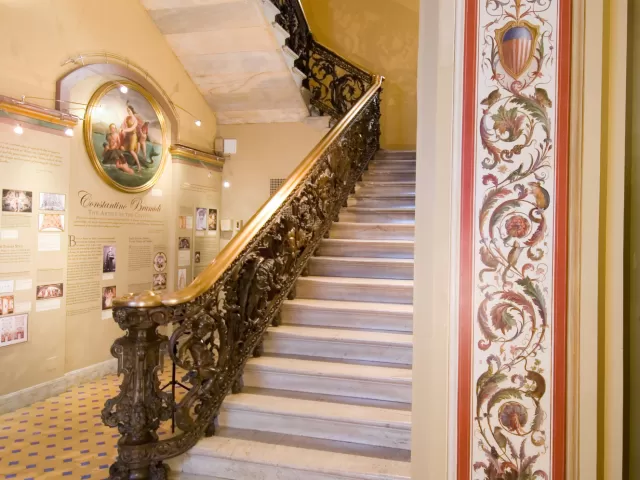Displaying 181 - 210 of 825 Clear
Highlight
In August 1814, during the War of 1812, invading British troops burned the U.S. Capitol and other buildings in Washington. That fall, Congress met in the Patent Office building (now the National Portrait Gallery/Smithsonian American Art Museum).
Highlight
Following passage of the "Residence Act," which required the government to move to a new city on the Potomac River in 1800, Congress moved to Philadelphia for a 10-year stay at Congress Hall.
Highlight
The Congress returned to New York's old City Hall in 1785, 20 years after the meeting of state delegates in that building. Here, in 1789, George Washington was inaugurated president and the first Congress under the Constitution was convened.
Highlight
In November and December 1784 the Congress met in the French Arms tavern in Trenton, New Jersey.
Highlight
In the summer of 1783 Congress moved to Princeton, New Jersey, where it met in Nassau Hall of the College of New Jersey (now Princeton University).
Highlight
The next congressional meeting place was the State House in Annapolis, Maryland. It was here that George Washington resigned his commission as commander in chief of the Continental Army.
Highlight
After leaving Baltimore the Congress met briefly in Philadelphia but soon moved to York, Pennsylvania, where it met for nine months in the old Court House.
Highlight
The Congress moved to Baltimore, Maryland, a safer haven during the war than Philadelphia, after the Declaration of Independence. It met in this rented building, since known as Old Congress House; the building was destroyed by fire in 1860.
Highlight
On July 4, 1776, delegates to the second Continental Congress issued the Declaration of Independence at Philadelphia's State House, now known as Independence Hall.
Highlight
The first Continental Congress met at Carpenters' Hall in Philadelphia, Pennsylvania, where they agreed to suspend trade with Great Britain.
Highlight
The Old City Hall in New York was the meeting place for delegates from nine colonies, who drew up a Declaration of Rights.
Highlight
At the old Stadt Huys in Albany, New York, colonial representatives devised a plan for a union of the colonies. The plan was ultimately rejected, but it became a guide for the later federal government.
Highlight
Contemporary Masonic practice included the laying of an inscribed metal plate along with a cornerstone. Caleb Bentley, a Quaker clockmaker and silversmith who lived in Georgetown not far from Suter's Fountain Inn, where the commissioners held their meetings, made the silver plate for the Capitol
Highlight
Thomas U. Walter, who was hired as architect of the Capitol extensions in 1851, also designed the building's new cast-iron dome. In this mural Walter (center, in brown coat and top hat) shows his dome design to President Abraham Lincoln. About the Cox Corridors Murals The first floor of the U.S
Highlight
For about six weeks in the fall of 1862 the Rotunda (as well as other chambers and hallways) was used as an emergency hospital. Among the nurses who served here were Dorothea Dix and Clara Barton, later the founder of the American Red Cross. About the Cox Corridors Murals The first floor of the U.S
Highlight
Andrew Jackson, the first president to be inaugurated outdoors at the Capitol, is shown taking the oath from Chief Justice John Marshall. This ceremony on the east front portico began a tradition observed by most presidents until 1981, when inaugurations were moved to the west front. About the Cox
Highlight
U.S. Capitol Grounds memorial tree to honor the life and service of Senate Librarian Leona Faust sponsored by Senate Majority Leader Charles E. Schumer and Senate Minority Leader Mitch McConnell.
Public Notice
Article
Located near Northeast Drive, across from the Senate wing of the U.S. Capitol Building.
Behind the Scenes
Article
Perhaps it's the charm of the historic campus or the weight of the symbolism it carries around the world, but at the Architect of the Capitol (AOC), it's not hard to find an employee who has spent their entire career serving this treasured institution.
Behind the Scenes
Article
The Architect of the Capitol (AOC) is responsible for managing the buildings and grounds on Capitol Hill, but it also maintains several facilities across the National Capital Region, including facilities in Fort Meade, Maryland.
Highlight
Corinthian columns are the most ornate, slender and sleek of the three Greek orders.
Highlight
The Ionic column is typically identified by its capital, which includes large paired spiral scrolls, or volutes.
Highlight
Doric columns typically have a simple, rounded capital at the top; a heavy, fluted or smooth column shaft; and no base. Flutes are vertical, parallel channels that run the length of a column.
History & Discoveries
Article
This Arbor Day, we celebrate the Capitol Grounds and Arboretum team's continued efforts to preserve and protect Olmsted's legacy — one of longstanding stewardship that's paying off every day.
Behind the Scenes
Article
Walking around the U.S. Capitol Grounds you can't help but be in awe of the impressive buildings and their historic meaning, what you probably don't know is that the U.S. Capitol Building is surrounded by an arboretum.
Programs & Events
Article
In February 2023, the United States Botanic Garden (USBG) opened the 27th annual joint orchid exhibit in partnership with Smithsonian Gardens.
Public Notice
Article
Articles include spotlights on the U.S. Capitol Grounds, U.S. Botanic Garden (USBG), sustainability and more.
Behind the Scenes
Article
The Architect of the Capitol's (AOC) Capitol Grounds and Arboretum staff are busy preparing for the upcoming growing season.
Public Notice
Article
The AOC's top priorities for the coming fiscal year are safety, security and accountability.
Highlight
During the mid-19th-century expansion of the U.S. Capitol, which added the House and Senate extensions, four private staircases were installed to allow representatives and senators to move quickly between their second-floor chambers and the building's first floor. Two are located near the House
